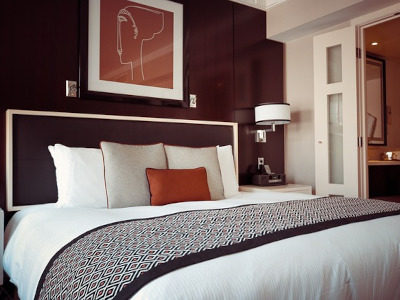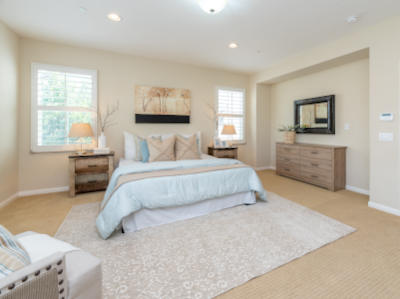The history of beds dates back millions of years. Ancient apes transitioned from sleeping on tree branches to sleeping on woven hardwood platforms during the Miocene period. This change allowed for better sleep quality, leading to improved cognition and memory for our ancestors.
Additionally, the oldest known mattress, discovered in the Sibudu Cave in Africa, is approximately 77,000 years old. It was made of layers of reeds and rushes, found beneath a pile of compacted grasses and plants used as bedding. To repel insects, a layer of leaves from river wild-quince was used as a top sheet. This may have been one of the earliest instances of humans using medicinal plants, as the plant produces chemicals that kill insects. In addition, the mattress itself was quite large, measuring about 22 square feet (approximately 2 square meters) and capable of accommodating an entire family. It stood at a height of approximately one foot (30.5 cm).

From 3200 BC to 2200 BC, the people of Skara Brae in Scotland had stone-built beds in their houses. The bed on the right side was larger, possibly indicating the male’s bed. Furthermore, between 3000 BC and 1000 BC, the ancient Egyptians had raised wooden beds. Commoners had plain wood beds, while those of high social status had beds made of ebony and adorned with gold and jewels. These beds kept insects and rodents away from sleepers. The beds were completed with a wool cushion mattress, linen sheets, and a stone or wooden head support. Around 1600 BC, the Persians introduced waterbeds made of goatskins filled with water. The purpose of these beds is still uncertain, but it is believed they were used to provide comfort to the sick or elderly. Moreover, from 1000 BC, wealthy Romans used raised metal beds with feather- or straw-stuffed mattresses. Those who were less fortunate had wooden bed frames with wool strings to support their mattresses. The poorest individuals simply slept on mats on the floor. Additionally, woolen blankets were commonly used by people of all wealth levels.
From the 5th century on, mattresses remained largely unchanged. Bed frames, on the other hand, became more intricate and were often carved from wood. The Saxons used rough straw mattresses covered in decorative fabric, while the Normans utilized iron railings to hang curtains around their beds. By the 14th century, feather beds were introduced and highly valued. Four-poster beds were common, with luxurious hanging materials becoming more important than the woodwork. In the mid-18th century, mattresses were covered in linen or cotton and filled with coconut fibers, cotton, wool, or horsehair, replacing the traditional down or hay. Beds became simpler after the luxurious 17th century, with metal bed frames gaining popularity. The four-poster bed lost its popularity in the 19th century, with standard head- and footboard sizes shrinking. The most significant advancement was the introduction of metal bed springs, which provided more stability and support to the sleeper compared to ropes or wool straps.

The history of beds reveals that most mattresses were stuffed. However, modern mattresses began with the realization that springs could be used instead. In December 1869, Timothy Rose and Platt S. Buell patented a bed spring in the US. Their work laid the groundwork for the modern mattress that many people sleep on today, although it took about 60 years to gain popularity. Even in the 1950s, mattresses were still stuffed with cotton instead of springs. Over time, cotton became compact and harder, while springs tended to soften.
Springs were an important improvement for mattresses. However, they were later replaced by memory foam due to the popularity of water beds. The modern water bed was invented in 1833 by Dr. Neil Arnott as a way to reduce bedsores. It consisted of a warm bath filled with water and sealed with rubber to prevent leaks. In 1968, Charles Hall introduced a vinyl mattress filled with heated water, which gained popularity among students. By 1986, water beds had a 20 percent market share. In 1966, NASA created memory foam for airplane seats, and it was successfully used in mattresses in 1991. Memory foam mattresses are now the leading alternative to traditional innerspring mattresses.
Social history of beds
Throughout history, beds have remained relatively unchanged in structure. However, who occupies the bed has changed over time. In the past, it was common for family members or friends to share a bed, and even strangers would sleep together in inns. This could lead to awkward situations, as some bedmates would “buck and babble” or come to bed drunk. Moreover, the Great Bed of Ware is a massive bed, equivalent to the size of two modern dubble beds, in an English inn that was built in 1590. In 1689, it is believed that this bed accommodated 52 people at once.
Furthermore, regular people slept with others or alone, but royalty had less privacy in their bedrooms. When newlyweds had a royal wedding, their bedding was a public event for the royal court. After the wedding feast, the bride was undressed by her ladies and put to bed. The groom would then come in in his nightshirt, sometimes with musicians. The bed curtains were closed, but guests would sometimes stay until they saw the couple’s naked legs touching or heard suggestive sounds. The next morning, the stained bed linen was shown as proof of consummation.
In addition, instead of going to an office, Louis XIV of France would rule from his bed each morning. He would sit with pillows and have important meetings and discussions with courtiers, for example, Lord Saint-Simon.
During the 19th century, the concept of private bedrooms gained popularity. This shift was influenced by factors including urbanization and religious beliefs. In cities, houses were built with small rooms, including one specifically for sleeping. Religion, particularly Evangelical Christianity, played a significant role in promoting the idea of private bedrooms. The Victorian era was characterized by a strong emphasis on marriage, chastity, and family values. Allowing strangers or friends to share a bed was no longer considered acceptable. In fact, by 1875, Architect magazine published an essay stating that using a bedroom for anything other than sleeping was considered immoral. In wealthy 19th-century homes, it became common for adults and children to have their own bedrooms. In addition, some couples even had separate bedrooms, connected by a door, with their own dressing rooms.
Nowadays, technology has infiltrated our bedrooms, with 80% of teens bringing their mobile devices to bed and nearly one-third sleeping with them. This has turned the bed into a place to socialize and even work, but it may be causing us to miss out on quality time with our partners and affecting our sleep. Studies have shown that banning smartphones from the bedroom can lead to a better quality of life.

Sources:
https://www.tuftandneedle.com/blogs/products/history-of-beds-and-mattresses#:~:text=The%20oldest%20known%20mattress%20in,leafy%20plants%20used%20as%20bedding.
https://daily.jstor.org/bizarre-social-history-beds/
